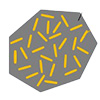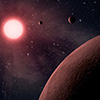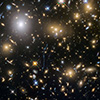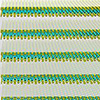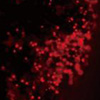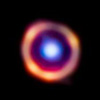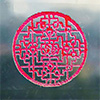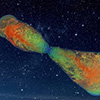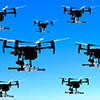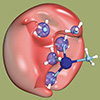Jun 06, 2023 (Nanowerk News) When organic pollutants such as dyes, agricultural chemicals, and pharmaceuticals enter waterways all around the world, they can harm the environment and human health – and removing them can be incredibly difficult. Photocatalysts – substances that absorb energy from light and use it to accelerate...
One-third of galaxy’s most common planets could be in habitable zone
Jun 06, 2023 (Nanowerk News) In a new analysis based on the latest telescope data, University of Florida astronomers have discovered that a third of the planets around the most common stars in the galaxy could be in a goldilocks orbit close enough, and gentle enough, to hold onto liquid...
The laws of physics used to be different, which may explain why you exist
Jun 06, 2023 (Nanowerk News) The laws of physics must have been different at the start of the universe than they are now, according to a mind-bending study conducted by University of Florida astronomers, which provides clues to why stars, planets and life itself managed to form in the universe....
Proposed design could double the efficiency of lightweight solar cells for space-based applications
Jun 06, 2023 (Nanowerk News) When it comes to supplying energy for space exploration and settlements, commonly available solar cells made of silicon or gallium arsenide are still too heavy to be feasibly transported by rocket. To address this challenge, a wide variety of lightweight alternatives are being explored, including...
Magnetic microrobots with folate targeting for drug delivery
Jun 06, 2023 (Nanowerk News) The effectiveness of microrobots in aiding drug delivery into cells is currently limited, which impacts their therapeutic value. To overcome this, researchers have integrated the cancer-targeting compound, folic acid (FA), into microrobots. This allows for increased drug absorption by cancer cells through a process known...
Webb detects universe’s most distant complex organic molecules
Jun 05, 2023 (Nanowerk News) Researchers have detected complex organic molecules in a galaxy more than 12 billion light-years away from Earth – the most distant galaxy in which these molecules are now known to exist. Thanks to the capabilities of the recently launched James Webb Space Telescope and careful...
Thermochromic smart windows for energy efficiency
Jun 06, 2023 (Nanowerk Spotlight) As the reality of climate change grows increasingly imminent, the need for energy-efficient solutions and decreased carbon emissions becomes more pressing than ever. Among the various ways to confront this global challenge, one stands out due to its close connection to our daily lives: optimizing...
Dying stars’ cocoons could be new source of gravitational waves
Jun 05, 2023 (Nanowerk News) So far, astrophysicists have only detected gravitational waves from binary systems — the mergers of either two black holes, two neutron stars or one of each. Although astrophysicists theoretically should be able to detect gravitational waves from a single, non-binary source, they have yet to...
Unleashing the power of intelligent drone swarms
Jun 05, 2023 (Nanowerk News) It’s a long-held notion, proven in fact, that robots are the perfect instrument to free humans from jobs that are dull, dirty and dangerous – the “3 Ds” in industry speak – with flying robots (drones) leading the way. As low-cost drones have proliferated worldwide,...
Slow electrons for more efficient reactions
Jun 05, 2023 (Nanowerk News) What the international team of researchers actually set out to do was to detect a mysterious chemical object: a dielectron in solution. A dielectron is made up of two electrons, but unlike an atom, it has no nucleus. Up to now, scientists have been unable...

